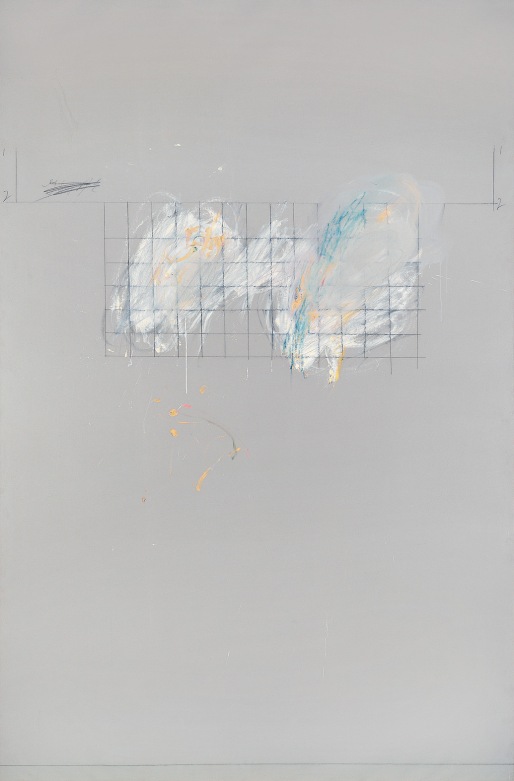









“Between 1962 and 1963, paintings by Twombly and historical references acquired a much more somber and anxious tone, as Twombly took as itsstarting point a series of historical murders, a twist that perhaps reflected the pessimistic mood of the early of 1960, when the missile crisis in Cuba and the assassination of President John F. Kennedy lived. Created in the winter of 1963, the painting cycle Nine Discourses on Commodus serves as a summary of this distressing and exceptional stage of his career. The cycle is based on cruelty, madness and eventual murder of the Roman emperor Aurelius Commodus (161-192 AD). The conflict, opposition and tension dominate the composition of the paintings. Two spirals of matter are the core of each piece, which varies in mood, from the serene and similar to the clouds until the bleeding wounds culminating in an ecstatic apotheosis in the final panel structures. Despite the intrinsic aesthetic of chaos and instability of the paintings, a highly controlled structure dominates its composition. The gray background acts as negative space that makes up the bloody swirls of paint and scabs of coagulated impasto.This neutral backdrop, the line runs along the middle of the paintings serves as orientation mark to subdivide the composition. Many of the paintings in the series Comfortable also present numerical sequences that often articulate grids, graphs and axes that form the skeleton of the paintings.”
Source:
Nicholas Cullinan, “Cy Twombly” in Guggenheim Museum Bilba or, Guggenheim Museum Bilbao, TF Editores, Bilbao / Madrid, 2009.
https://www.guggenheim-bilbao.eus/obras/nueve-discursos-sobre-comodo-3/